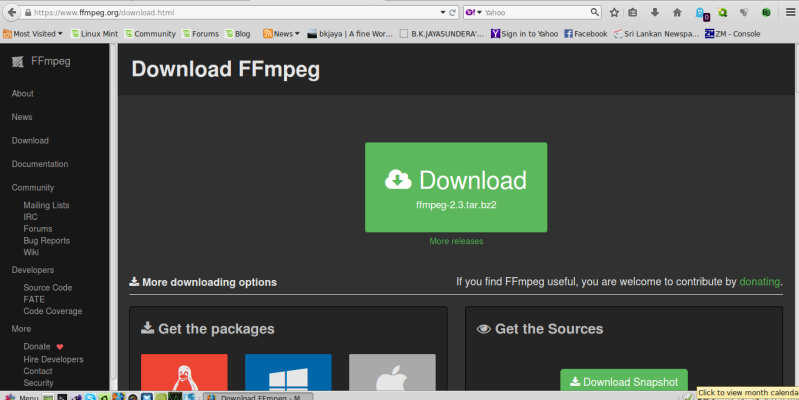

To verify the installation, use the ffmpeg -version command, which prints the FFmpeg version: ffmpeg -version : sudo apt update sudo apt install ffmpeg To install it, enter the following command as root or user with sudo privileges A new major version is released every six months, and the version included in the repositories usually lags behind the latest version of FFmpeg.Īt the time of writing this article, the current version of FFmpeg available in the Ubuntu 20.04 repositories is 4.2.x. This is the easiest way to install FFmpeg on Ubuntu. The official Ubuntu repositories contain FFmpeg packages that can be installed with the apt package manager. This article describes how to install FFmpeg on Ubuntu 20.04. With FFmpeg, you can convert between various video and audio formats, set sample rates, capture streaming audio/video, and resize videos. It contains a set of shared audio and video libraries such as libavcodec, libavformat, and libavutil.

And then click OK on the Environment Variables and the same for System Properties window.FFmpeg is a free and open-source collection of tools for handling multimedia files. Step 9: Click on the OK button on the "Edit Environment Variables" window to close it. If you did this correctly on the window called "Edit environment variable" you should see a new item on the list that points to C:\bin It should be something like "This PC" -> "Local Disk (C:) then selecting the folder called bin. Navigate and select the bin folder that you created within your C drive and select OK. On the new window called Edit environment variable click on the button that says New, then click on Browse. Under the Variable section click on Path and then click on the Edit button. Focusing on the top section you have an area divided into 2 parts: Variable and Value. Step 7: A new window will popup called "Environment Variables". Step 6: From the upper tabs within System Properties window click on the tab called "Advanced", then click on the bottom right where it says "Environment Variables." Step 5: On the left side click on "Advanced system settings" (a new window will popup System Properties) Step 4: Right click on "This PC" and select Properties. If you did this correctly then if you navigate to C:\bin you will find 3 programs that you just copied : ffmpeg.exe ffplay.exe and ffprobe.exe. Step 3: Copy all three items located within the ffmpeg folder that was just extracted to your newly created folder in your C drive. Step 2: Go to your "C:" drive and create a folder called "bin" We will only use the folder called "bin". Inside the folder you will find 3 folders and 2 other documents. This will create a folder called "ffmpeg-40e79-full_build". Here is the link to the zip file to make it easy to download. Step 1: Download ffmpeg from gyans website.


 0 kommentar(er)
0 kommentar(er)
